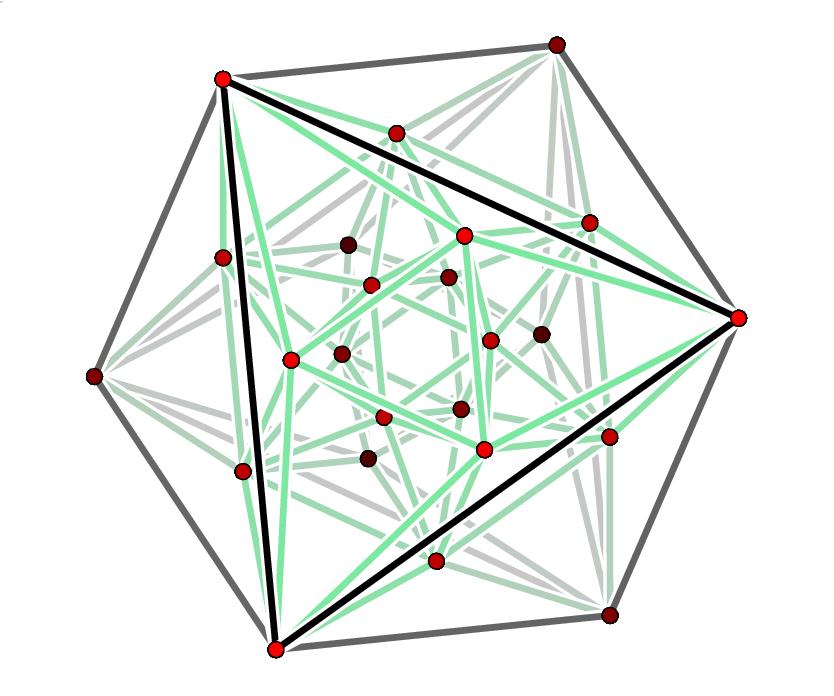 The red dots are the 24 roots of D4,
projected from 4 dimensions down to 3 and then drawn in the plane.
The red dots are the 24 roots of D4,
projected from 4 dimensions down to 3 and then drawn in the plane.
These points are the vertices of the
24-cell, whose
edges are also drawn here.
Seminar - Fall 2008
Lie Theory Through Examples
John Baez
Simple Lie groups and Lie algebras tie together
some of the most beautiful, symmetrical structures in mathematics:
Platonic solids and their higher-dimensional cousins,
finite groups generated by reflections, lattice packings
of spheres, incidence geometries, symmetric spaces,
and more. In this fall's seminar we'll explore this web of ideas
through examples, starting with easy 'classical' ones and working
up to 'exceptional' ones such as the 248-dimensional
Lie group E8.
Here are the lecture notes, and blog entries where you can ask
questions and discuss ideas:
-
Lecture 1
(Sept. 30) - Introduction. The simplest interesting example: A2.
Blog entry.
-
Lecture 2
(Oct. 6) - The Killing form and the A3 lattice.
Blog entry.

Triangular pyramid of balls. The balls' centers form
a copy of the A3 lattice.

A different view
makes it clear why the A3 lattice is also called
a "cubic close packing".

You can also think of the A3 lattice as built
from octahedra and tetrahedra. This figure is from Buckminster
Fuller's patent for the "octet truss", now widely
used in architecture.

In the A3 lattice, each point has 12 nearest neighbors,
which form the vertices of a cuboctahedron.
-
Lecture 3
(Oct. 21) - Representations of Lie groups. The weight lattice
of a simply-connected compact simple Lie group.
Blog entry.
-
Lecture 4
(Oct. 28) - Classifying unitary representations using weights. The example of
A1, which corresponds to the group SU(2). The relation between
SU(2) and SO(3), and their representations.
The example of A2, which corresponds to the group SU(3).
Blog entry.
-
Lecture 5
(Nov. 18) - The spin groups.
If you discover any errors in the course notes
please email me, and I'll try to correct them.
I'll keep a list of errors that
haven't been fixed yet.
You can also download
LaTeX files of the
lecture notes, if for some bizarre reason you want
them. However, the authors keep all rights to this work, except
when stated otherwise.
baez@math.removethis.ucr.andthis.edu
© 2008 John Baez



